|
|
|
CAMERAS IN THIS
SECTION |
|
MANUFACTURING COUNTRY |
Taiwan |
|||
|
DATE OF AVAILABILITY |
2000 October |
|||
|
SUGGESTED PRICE |
93000 yen |
|||
|
TYPE |
Motor drive and strobe
integrated 35 mm focal plane shutter AF/AE single lens reflex |
|||
|
LENS MOUNT |
Canon EF mount |
|||
|
SHUTTER SPEEDS |
1/4000 to 30 seconds |
|||
|
BUILT-IN FLASH |
yes |
|||
|
BATTERIES |
2 x Lithium batteries (CR123A) |
|||
|
DIMENSIONS, WEIGHT |
146.7 x 103.0 x 69.0 mm 580g (w/o batteries; + 32g with
batteries) |
|||
|
I bought this camera in March 2003
after realizing that APS is headed to extinction. EOS7 also was the first
real 35mm camera I ever bought. I've been using disposable cameras and APS
cameras until then. The major reason for choosing APS over
35mm way back was that I had trouble loading the practice film into a compact
35mm camera displayed at the store (I seem to have two left hands).
Therefore, upon purchase of the EOS7, I thought loading the film was going to
be a huge hurdle for me. It turned out that loading the film was no trouble at
all. Everything was automated. Now that's technological advancement (and
perhaps human retrogression). EOS7 features an aluminum casing
(supposedly more durable and high-quality than engineering plastic), 7-point
auto-focus, as well as a pop-up flash. Mode dial is equipped with 'Scene
Modes' that allows an absolute beginner to take tolerable photos. EOS7 is a great camera for beginners
who don't want a camera that shouts "a beginner camera!" but needs
every convenience and simplicity offered by such a camera. It's also a good
camera for more advanced users who desire all the features of modern AF
cameras but just can't afford top-of-the-grade ones. This camera features Canon's fabled
EYE CONTROLLED FOCUS technology that allows the user to focus on objects just
by looking at it. It sounds great, but it's a gimmick that's way over my
little head, so I don't use it. Also, I heard that it doesn't function well
for those wearing glasses, so that's another drawback for me. This camera is marketed as EOS ELAN7E
in the United States. There is also EOS ELAN7, which is similar to ELAN7E,
but without the EYE CONTROLLED FOCUS. Such model is not available in Japan. I
wonder why. |
||||
|
PROS |
1. Simple to use, even for beginners 2. Great quality and mechanical performance for its price |
|||
|
CONS |
1. Pop-up flash doesn't pop-up all that much, so external strobe
is required when using large lens in poorly lit environments. 2. Portion of the casing is plastic, creating spaces between
aluminum casing, causing cheap squeaks and creaks (especially around the
shutter button). This spoils the solid feel of the metal casing. |
|||
|
EOS7 with Tamron 28-300
lens |
EOS7 with back open |
|||
|
Front view |
Body with strobe shut. |
With the strobe raised. It doesn't pop up all that
much. |
||
|
Command dial, with the scene modes. External strobe
socket is painted black, which will definitely scrape off when using external
strobes. |
LCD display and other various controls. |
Shutter button. The casing around the button is
plastic, while the rest of the top cover is aluminum. This creates cheap
squeaks. |
||
|
Rear view. Overall, it's simple to use. |
||||
|
MANUFACTURING COUNTRY |
China |
|
|
DATE OF AVAILABILITY |
2003 April |
|
|
SUGGESTED PRICE |
19800 yen |
|
|
TYPE |
Digital auto focus camera and memory integrated binocular |
|
|
LENS MOUNT |
NA |
|
|
CCD |
1.3 megapixel CMOS |
|
|
RECORDING PIXELS |
1280 X 1024 |
|
|
MEDIA |
SD Memory Card |
|
|
LCD MONITOR |
none |
|
|
SHUTTER SPEEDS |
auto |
|
|
BUILT-IN FLASH |
no |
|
|
BATTERIES |
3 x Type AAA |
|
|
DIMENSIONS, WEIGHT |
127 x 90 x 48 mm 280g (w/o batteries) |
|
|
I bought this device in July 2003. I was facing a problem. The
digital camera I had (Kodak
DCS280J) only had 2X zoom which was of no use when shooting
distant objects. On the other hand, the 35mm camera (Canon EOS7) was often too much of a baggage,
and Vectis40 and Vectis S-1 were APS,
which I didn't want to use any more. When I saw the BC1300 (8X
magnification!) on the net, I thought it would solve all my problems. The
resolution was only 1.3 mega pixels, but I thought it would be sufficient for
my purposes. Big mistake. The binocular portion is 8X, but
the digital portion isn't. What you see through the binoculars aren't the
images that are processed to the memory card. The digital portion is 4X at
best. To make matters worse, Picture
quality is extremely poor. The image looks like a mosaic in ancient Greek
temples than a photo. Binocular + digital camera. It's a great concept, it's
something I think many people crave for (perhaps not), but this particular
product is essentially a really cheap binocular with minimal digital photo
capability, with almost no consideration for ergonomics. |
||
|
PROS |
1. A unique binocular plus digital
camera system |
|
|
CONS |
1. Ejecting the SD memory card is a chore. The designer
failed to consider the fact that the user might want to remove the card after
use 2. What you see through the binoculars isn't what you
get in the digital camera 3. Digital image quality is extremely poor, resulting
in mosaic images |
|
|
Front view, with
packaging. Comes with a case. |
Rear view |
|
|
MANUFACTURING COUNTRY |
Japan |
|||
|
DATE OF AVAILABILITY |
1999 July |
|||
|
SUGGESTED PRICE |
open |
|||
|
TYPE |
Lens shutter compact digital auto focus camera |
|||
|
LENS MOUNT |
Fixed lens: Kodak Ektanar, 8 elements in 7
groups, F3.0-F3.8 |
|||
|
CCD |
1/1.76 inch CCD |
|||
|
RECORDING PIXELS |
2.3 megapixels |
|||
|
MEDIA |
CompactFlash |
|||
|
LCD MONITOR |
1.8 inch LCD monitor |
|||
|
SHUTTER SPEEDS |
auto |
|||
|
BUILT-IN FLASH |
yes |
|||
|
BATTERIES |
4 x Type AA lithium batteries |
|||
|
DIMENSIONS, WEIGHT |
133 x 52 x 76 mm 342g (w/o batteries) |
|||
|
I purchased this camera in
December 2001. It was the first digital camera I ever bought. The resolution of 2.3 mega pixels
is extremely low by current standards, but at the time I bought it, it was
high. Professional digital cameras costing about as much as a medium-sized
car had about the same resolution (although with larger sensors). Immediately
after purchasing it, I had asked myself again and again why I bought a camera
of such excessive performance (and cost). Although it was a
"high-end" digital camera at the time I bought it, I was
immediately dissatisfied with its performance. As a camera, everything fell
short of the APS compact I owned, the Vectis40. First of all, the lens only has 2X
zoom, which fall far short of Vectis40's 4X. Secondly, the camera is
extremely slow. It's a slow starter, and it takes ages to process the images
on to the memory card. Thirdly, the camera is a battery guzzler, requiring
four AA batteries. The batteries don't last, especially if you use the LCD
monitor frequently. And last but not least, macro performance is poor.
Although it has a macro mode, any attempt at taking pictures of objects
closer than 30 cm result in out-of-focus blurs. This is the camera I use the most
(both 35mm and digital included). Many of the images in this site were taken
with this camera. But I'm looking for a replacement (I bought its
replacement, Nikon COOLPIX3100, in October 2003). |
||||
|
PROS |
1. Easy-to-use interface |
|||
|
CONS |
1. Rather large and heavy for a
"compact" digital camera 2. Requires four AA batteries 3. Processing is slow 4. Poor macro
performance |
|||
|
Front view, power
off |
Rear view |
|||
|
With power on |
Rear view, power
on |
Top view |
||
|
Command dial |
LCD display |
|||
|
MANUFACTURING COUNTRY |
Japan |
||
|
DATE OF AVAILABILITY |
1996 April |
||
|
SUGGESTED PRICE |
66000 yen |
||
|
TYPE |
IX240 lens shutter auto focus camera |
||
|
LENS MOUNT |
Fixed lens: Minolta Lens 30-120mm F3.5-F9.9 (equivalent to 38-150mm in 35mm
film), 6 elements in 6 groups |
||
|
SHUTTER SPEEDS |
auto |
||
|
BUILT-IN FLASH |
yes |
||
|
BATTERIES |
2 x CR2 lithium batteries |
||
|
DIMENSIONS, WEIGHT |
123 x 71.5 x 60 mm 320g (w/o batteries) |
||
|
I bought this camera in August
1998, for a trip to Thailand. I've been using disposable cameras until then. This camera wasn't under
consideration when I entered the camera store. I wanted a Pentax
Espio, a compact 35mm camera with 5X zoom lens. But
when I tried to load the test film, I found that I had two left hands when it
came to handling cameras. The store clerk, observing this, recommended that I
try an APS camera. That was the Vectis40. Lens was a
4X zoom (30 - 120mm), which was lower than the Pentax,
but I found it quite attractive (easy to use, to be exact), so I purchased it
on the spot. It's a fine camera, and served me
long and well until I realized that the APS is headed to extinction. |
|||
|
PROS |
1. Simple interface 2. 4X zoom lens 3. Splash-proof |
||
|
CONS |
1. APS 2. Battery guzzler; I didn't take as many photos in
Thailand as I had planned, because the batteries dried up at the airport
before departure. I had to rely on spares during the trip. 3. No manual zoom. Power zoom is fine, but it's slower
than doing it manually, and eats up batteries like crazy. 4. You need a coin to open the battery compartment.
Well, actually, you can open it without a coin, but you'll damage the latch.
I kept opening and closing the battery compartment (to take batteries in and
out to conserve them) with my fingernail, and the latch was damaged. I
seriously doubt that it's splash-proof any more. |
||
|
Front view |
Rear view |
Lens fully
extended |
|
|
Rear view. Scene
modes can be seen. |
Close-up |
Front view |
|
|
MANUFACTURING COUNTRY |
Malaysia |
|||
|
DATE OF AVAILABILITY |
1996 June |
|||
|
SUGGESTED PRICE |
62000 yen (body only) 82000 yen (with V zoom 28-56mm F4-5.6) 10000 yen n (with V zoom 22-80mm F4-5.6) |
|||
|
TYPE |
IX240 auto focus single lens reflex |
|||
|
LENS MOUNT |
Minolta V mount |
|||
|
SHUTTER SPEEDS |
auto |
|||
|
BUILT-IN FLASH |
yes |
|||
|
BATTERIES |
2 x CR2 lithium batteries |
|||
|
DIMENSIONS, WEIGHT |
126.5 x 76.5 x 63.5 mm 365g (w/o batteries) |
|||
|
I bought this camera in September
2002. It was the first SLR I ever bought. I signed up for a group photo session
that was to be held that month, and decided that I should use an SLR, not a
compact camera. But being strapped for cash, I
wanted an SLR at the lowest possible price. That was when I saw the Vectis S-1, sold at a clearance price (about 40000 yen,
40% of the suggested retail price). The fact that it was an APS camera using
batteries compatible to the Vectis40 (CR2) made it quite attractive. It would
enable me to use the Vectis40 as a back-up. Also, it was a Minolta, the same
manufacturer as the trusty Vectis40.
This camera has my name engraved on it, or I thought at the time. I purchased the Vectis S-1 on the spot, and took it to the shooting
session the next day without testing it. Big mistake. It turned out that the camera was
defective. The power seemed to turn off at the perfect shooting moment, turns
on unexpectedly at the slightest touch. The motor of the winder is defective
as well. I found more than one photos with unintended double exposures. I was the only one in the photo
session with an APS camera, and the promoter of the session had no APS film
in stock, so when the APS film I brought ran out, I had to go out and sprint
for about half an hour to purchase additional films. This camera, had it not been
defective, would have served me for a long time, despite all the drawbacks.
But being defective, it served me only twice before retiring. That's what you
get for buying something at a clearance price. You end up spending more. |
||||
|
PROS |
1. Simple-to-use interface. 2. Compact body and lens 3. Splash-proof body and lens, a feature that isn't
offered in 35 mm SLRs other than Canon's flagship
EOS1v and Nikon's flagship F5 |
|||
|
CONS |
1. Defective. I don't know about other Vectis S-1s, but the one I own is the only Vectis S-1 I know, so it places ideas in my head that all
Vectis S-1s ever manufactured are defective. I lost
all confidence I had toward Minolta. 2. Made in Malaysia. I have nothing personal against
Malaysia. It's probably a wonderful country. But the Vectis
S-1 was the first camera I bought that was not made in Japan. It made me
doubtful of all Japanese maker cameras assembled in foreign plants. 3. Being compact, it's easy to handle, but being
compact, I look as if I'm using a compact camera rather than an SLR. 4. The power button is located right beside the finder,
so there were instances where I turned the camera off when I was looking
through the finder (at first I thought that this was the reason why the
camera turned off suddenly) |
|||
|
Front view with
28-80 mm lens |
Rear view |
|||
|
Front view, body
only |
Strobe raised |
Rear view. Note
the gray power button immediately below the finder at the upper left corner. |
||
|
The two Vectis. Vectis S-1
body (rear) is more compact than the compact camera Vectis40 (front). |
||||
|
MANUFACTURING COUNTRY |
Japan |
|
|
DATE OF AVAILABILITY |
1990? |
|
|
SUGGESTED PRICE |
172000 yen (set price; includes 35-85mm AF lens and external
strobe 5200i) |
|
|
TYPE |
35mm auto focus single lens reflex |
|
|
LENS MOUNT |
Minolta Ώ mount |
|
|
SHUTTER SPEEDS |
30 to 1/8000 seconds |
|
|
BUILT-IN FLASH |
no |
|
|
BATTERIES |
2CR5 lithium battery |
|
|
DIMENSIONS, WEIGHT |
153.5 x 93 x 69 mm (body only) 520g (w/o batteries; body only) |
|
|
After the Minolta
Vectis S-1 experience, I thought that I'll never purchase another
Minolta ever again in my life time.
But, as the saying goes, never say never.
I purchased a Minolta.
"Why in the world did you buy a Minolta? Are you crazy? Don't you
ever learn," you might ask.
Well, the Minolta I purchased was no ordinary Minolta.
It's an Ώ-8700i.
What's so special about Ώ-8700i? There must be a million Ώ-8700i
around, you might say.
Well, this particularΏ-8700i is no ordinary Ώ-8700i.
It's a MIR Limited Edition.
What is 'MIR'? What's so special about it?
MIR was a Russian space station, launched in 1986, and destroyed
intentionally in 2001. It first served as a space laboratory for the Russian
Space Agency, and later became as an important test-bed for the International
Space Station.
In the late 1980s, two Japanese astronauts (male and female, not at
the same time) went to MIR with specially-built Minolta Ώ-8700i, as first
Japanese in outer space. To commemorate this historic event, Minolta produced
8000 units of Minolta Ώ-8700i, with the special pearl-white finish similar to
the ones that went to outer space.
It is said that the pearl-white finish prevent the camera from heating
up by strong solar rays.
I read about this camera a dozen times in magazines on used cameras,
so I knew about its existence, but I thought that I'll never see it.
In December 2003, I went to Matsuyama on a
trip. I saw a camera store, and decided to have a look inside. Although not a
used camera store (majority of the cameras sold were new), in the corner was
a used camera section.
There were many cameras, and one that stood out the most was the Ώ-8700i,
with its pearl-white body and external strobe. It was in very good condition
(another camera that stood out was an unused Canon New F-1 and motor drive,
which was sold by the next day despite the price tag of 200000 yen).
Not only was it in good condition, it came with the original box.
And the price?
68000 yen, excluding tax.
No pocket change, but not an impossible fortune. I contemplated for several moments, and
decided to purchase it.
It was 71400 yen with tax.
With minute scrapes, it's not exactly in mint condition, but it's in
very good condition, with original manuals, and guarantees (with the name of
the previous owner; no longer valid). |
||
|
PROS |
1. Simple to use 2. Although limited edition, it's relatively
inexpensive 3. Pearl-white finish is beautiful 4. Made in |
|
|
CONS |
1. No built-in strobe 2. Plastic body. I don't know if the Ώ-8700i that went
to outer space is exactly same as the ones sold to general public, but if it
is, I seriously doubt its durability 3. Auto focus relatively noisy and slow by current
standards 4. Pearl-white finish too fragile for practical use? |
|
|
Humongous box Although hard to
see in the image, the space station MIR printed on the surface |
Complete set With body, lens, and external strobe (in the black case) |
|
|
Assembled set,
with strap, and caps The pearl-white
body is, well..., extremely white. |
||
|
Rear view |
With camera back
open |
|
|
Shutter button.
Palm grip is extremely large |
Even the lens is
pearl-white |
|
|
Detail |
Detail |
|
|
ΜBY
|
||
|
MANUFACTURING COUNTRY |
Japan |
|
|
DATE OF AVAILABILITY |
1988 |
|
|
SUGGESTED PRICE |
80000 yen (set price; includes 35-85mm AF lens and external strobe
5200i) |
|
|
TYPE |
35mm auto focus single lens reflex |
|
|
LENS MOUNT |
Minolta Ώ mount |
|
|
SHUTTER SPEEDS |
30 to 1/4000 seconds |
|
|
BUILT-IN FLASH |
no |
|
|
BATTERIES |
2CR5 lithium battery |
|
|
DIMENSIONS, WEIGHT |
153.5 x 93 x 69 mm (body only) 590g (w/o batteries; body only) |
|
|
I responded to a sweepstakes of a magazine on used cameras, and won
this camera for free.
It came with a lens and an instruction manual. It looked very used.
Operation and dimensions are similar to Ώ-8700i.
The major difference is that while the Ώ-8700i is capable
of shutter speeds of up to 1/8000 seconds, this camera is only capable of
only up to 1/4000 seconds. |
||
|
PROS |
1. Simple to use 2. Made in 3. Nice grip 4. Setting can be immediately returned to P mode simply
by pressing the P button. |
|
|
CONS |
1. No built-in strobe 2. Plastic body. I have nothing against plastic body (I
use Nikon D100),
but the surface finish of this camera is very plasticky. 3. Auto focus relatively noisy and slow by current
standards 4. Lid of the battery compartment is not connected to
the body. I'm afraid that I'll lose it someday. 5. Mode setting is done by buttons, not dials like
current cameras. I find dials are easier to operate |
|
|
With standard lens |
Note the large
grip |
|
|
Rear view |
With camera back
open |
|
|
MANUFACTURING COUNTRY |
Japan |
|
|
DATE OF AVAILABILITY |
1967 June |
|
|
SUGGESTED PRICE |
37900 yen (in 1967) |
|
|
TYPE |
35mm manual focus single lens reflex |
|
|
LENS MOUNT |
Minolta SR mount |
|
|
SHUTTER SPEEDS |
1 to 1/1000 seconds |
|
|
BUILT-IN FLASH |
no |
|
|
BATTERIES |
|
|
|
DIMENSIONS, WEIGHT |
145.5 x 88.5 x 47.5 mm (body only) 830g (with MC ROKKOR PF) |
|
|
This isn't my camera. It's my parent's.
Along with this camera, he had two lenses, MC ROKKOR PF F1.7 55mm and
KOMURA SUPER F5 300mm. It seems that MC ROKKOR PF F1.7 55mm and SR-1s body
was sold together as a set.
He bought it second-hand in early 1970s, but said that it still cost a
small fortune.
What cost even more was the KOMURA SUPER F5 300mm.
The fact that it came with a leather case (not shown) make it feel
vintage.
SR-1s is an improved version of Minolta's medium-range camera, the SR-1.
It's more compact, and maximum shutter speed increased to 1/1000 seconds, up
from 1/500 seconds. In terms of maximum shutter speed, it equaled Minolta's
top-end product at the time, the SR-T101. |
||
|
PROS |
1. Made in 2. Metal construction 3. No batteries required |
|
|
CONS |
1. Hefty for its size 2. Maximum shutter speed of 1/1000 seconds might be
regarded inadequate by current standards |
|
|
With MC ROKKOR PF |
With MC ROKKOR PF |
|
|
Rear |
Rear |
|
|
Top |
With back open |
|
|
With KOMURA SUPER |
With KOMURA SUPER |
|
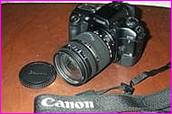
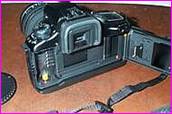
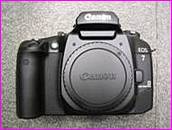
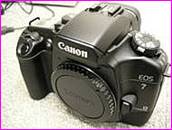
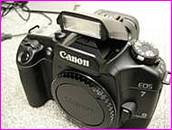
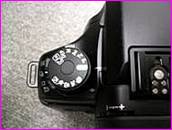
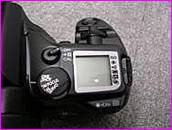
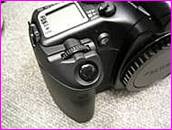
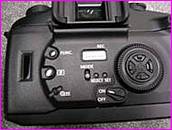
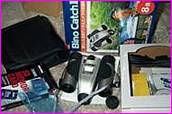
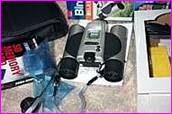
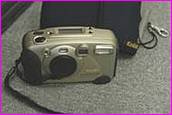
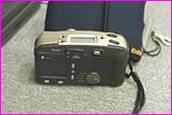
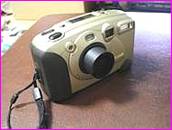
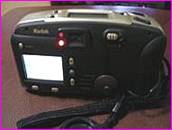
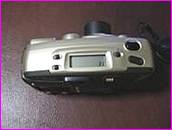
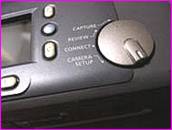
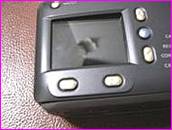
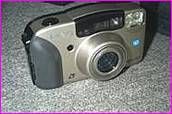
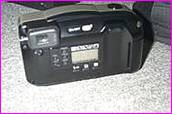
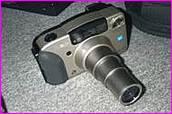
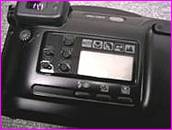
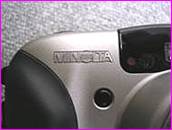
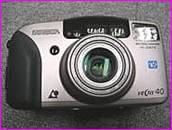
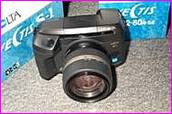
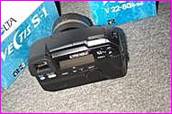
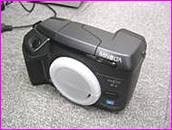
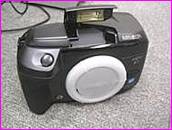
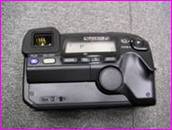
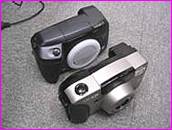
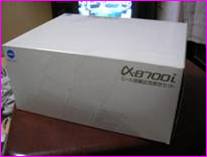
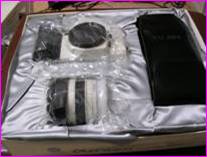
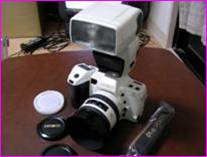
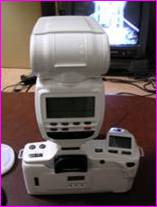
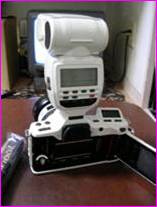
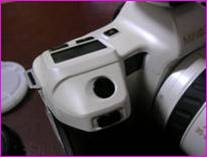
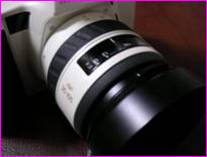
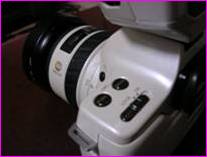
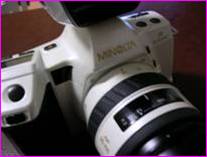
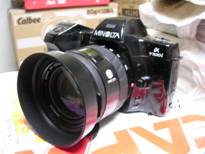 @
@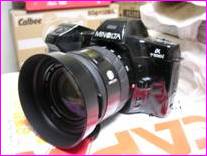 @
@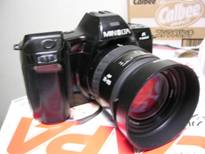
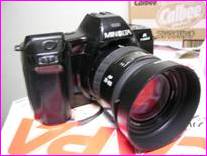 @
@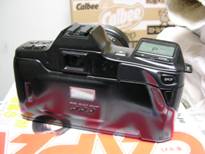 @
@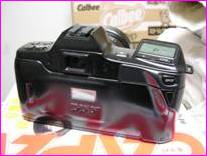
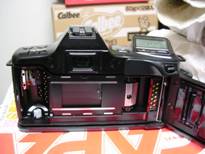 @
@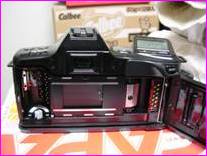 @
@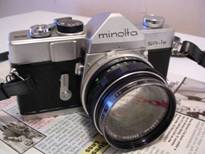
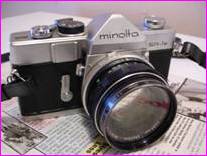 @
@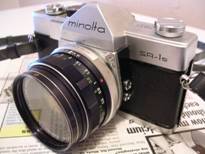 @
@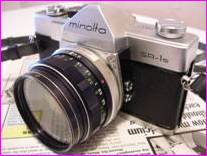
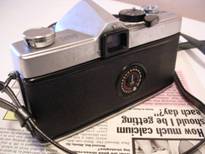 @
@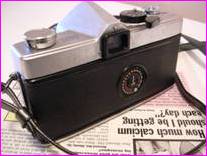 @
@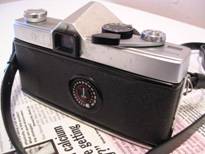
 @
@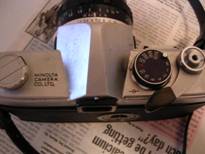 @
@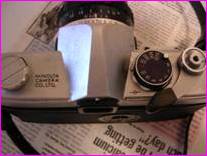
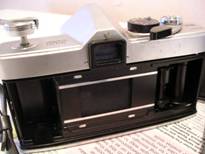 @
@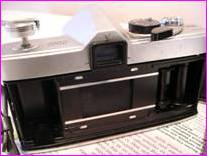 @
@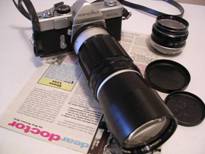
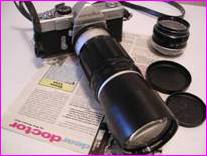 @
@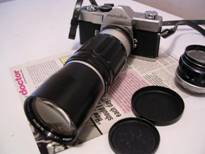 @
@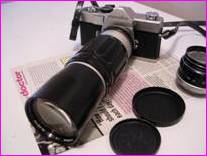
 @
@ @
@











